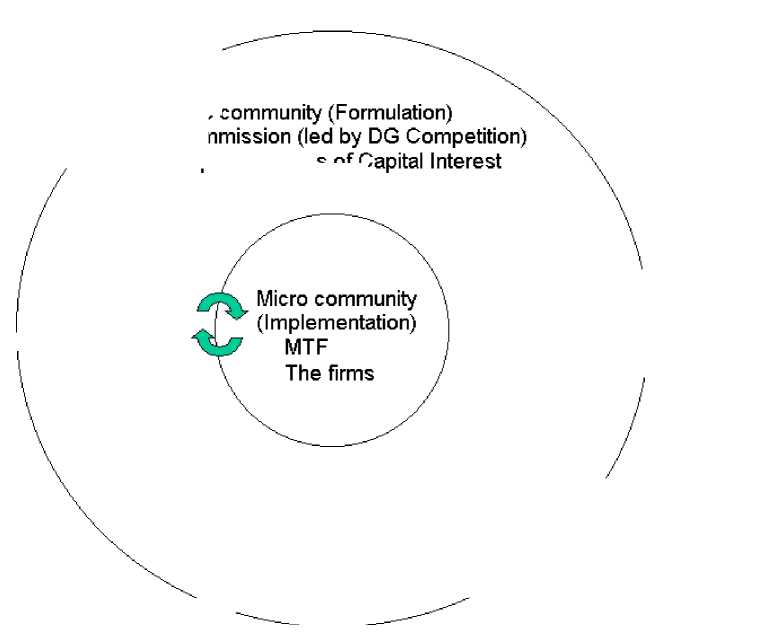15
Nestlé/Perrier thus represented a test case in order to potentially set a collective
dominance precedent (Linklaters and Paines 1992).
After notification of the merger and preliminary Phase I analysis, a deeper Phase
II investigation into the merger ensued. According to officials, this last phase could best
be characterized as an informal and closed-process involving only both rappateurs and
high level MTF officials as well as the firms concerned (Interview 2001a, Interview
2002).21 This points to the existence of what we refer to as a ‘micro’ community.
Relative to the ‘macro-community,’ wherein the several DGs within the Commission led
by DG IV and the umbrella organisations representing capital as a whole were involved
in the formulation of the MCR, the actors involved during regulation of the merger
process based on MCR rules consisted of (two) more specific actors representative of
those having acted within the larger ‘macro-community,’ namely the MTF and the
specific merging firms.
Figure 1. European Merger Policy Communities

Macro community (Formulation)
Commission (led by DG Competition)
Representatives OfCapitaI Interest
Micro community
(Implementation)
MTF
The firms
More intriguing information
1. The name is absent2. The name is absent
3. The name is absent
4. The name is absent
5. The name is absent
6. The name is absent
7. Climate change, mitigation and adaptation: the case of the Murray–Darling Basin in Australia
8. PRIORITIES IN THE CHANGING WORLD OF AGRICULTURE
9. Surveying the welfare state: challenges, policy development and causes of resilience
10. The Modified- Classroom ObservationScheduletoMeasureIntenticnaCommunication( M-COSMIC): EvaluationofReliabilityandValidity